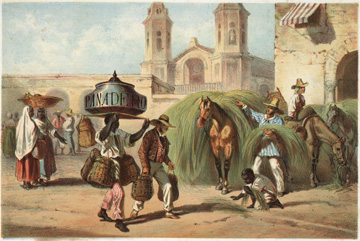Africans in the Americas

By 1820, more than three times as many Africans had boarded ships for the New World than Europeans—a remarkable fact that underscores the importance of African contributions to everyday life and culture in the early Americas.
Africans who survived the Middle Passage were a culturally diverse group, and their origins varied tremendously over time, as those engaged in transatlantic slave trade adapted their commerce to ever-changing markets, political alliances, and technologies over a 366-year period. Africans who found themselves in America came from vast stretches of West, Central, and Southeast Africa, even from Madagascar. Most, however, were taken from six distinct regions of the African coast: Upper Guinea, Gold Coast, Bight of Benin, Bight of Biafra, West-Central Africa and Southeast Africa. Nearly half of all African captives were taken from West-Central Africa (today’s Congo and Angola).
African origins were important in the development of creole cultures and communities in the Americas. As the stories of Olaudah Equiano, Rufino José Maria, and Belinda attest, one’s African roots mattered a great deal to individuals who had been cruelly separated from family and friends, as well as the norms and practices of their culture and religion.
In mines, on plantations, and in houses throughout the Americas, Africans guarded some aspects of the identities they brought with them but creatively melded other dimensions with those of Africans, Native Americans, and Europeans they encountered in their everyday lives as enslaved people. Creole cultures of the Americas were new expressions of identities formed from the collision and—to some degreemdash;merging of Atlantic lives, beliefs, and worldviews.






